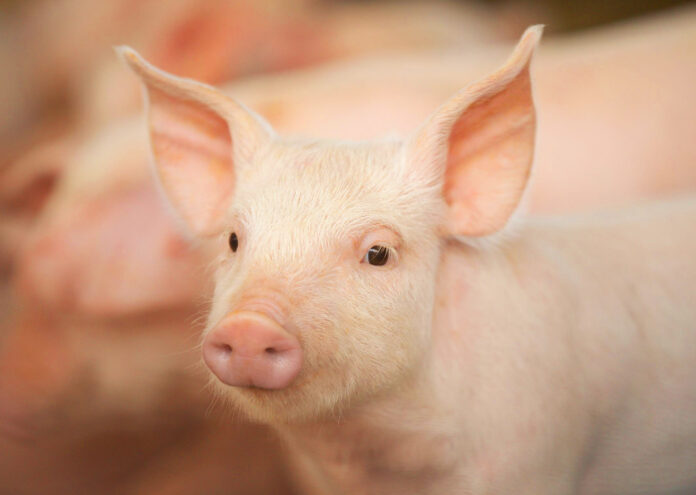By Banks Baker
Editor’s note: Banks Baker is Director, New Product Marketing, PIC. He can be contacted at banks.baker@genusplc.com.

Less than a year ago, I led protein sustainability at McDonald’s U.S. Now, I’m spearheading new product marketing for PIC: one of the world’s premier pig genetics companies.
PIC is on a mission to demonstrate how advanced breeding technologies that produce healthy, robust and efficient pigs can help stakeholders throughout the value chain reduce carbon emissions and meet ambitious greenhouse gas reduction goals.
Genetics play a significant role in a sustainable food system, and their positive impacts have been overlooked for far too long. PIC recently announced a partnership with the U.S. National Pork Board to create a framework that will provide a pathway for corporations and pork producers to claim the environmental impact of genetic improvements.
Let’s start from the beginning.
McDonald’s was the first global restaurant company to publicly announce a science-based target to lower greenhouse gas emissions. The company’s sustainability goals were ambitious, and my role was clear: work alongside suppliers – some of the world’s largest protein companies – to identify and implement strategies to reduce carbon emissions from the company’s supply chain.
Investors, environmental activists and consumers are pressuring corporations to minimize their environmental footprints. Even the most climate-forward companies can only eliminate so much carbon from their operations. It requires close collaboration with partners to achieve further reductions.
That’s where pork producers come in.
The role of genetics in environmental sustainability

Traditionally, pork producers have relied on strategies like manure management or changing how feed is grown to lower greenhouse gas emissions. PIC is working the other end of the equation; we’ve set out to quantify the environmental benefits of using advanced genetics and genetic improvements.
Choosing the right genetics produces more efficient and resilient pigs that use less water, require less feed, have less need for antibiotics and reach market weight sooner. This allows farmers to mitigate emissions before they happen – unlike many popular carbon-reduction strategies that sequester or offset emissions. Mitigating emissions is also easier to monitor, report and verify. But, to date, corporate climate reduction strategies have overlooked genetic improvements as a viable intervention opportunity to cut emissions.
Creating a credible, quantifiable framework
PIC and the National Pork Board are teaming up to create a framework that will demonstrate how genetic improvements are an effective way to lower greenhouse gas emissions. The details are still being developed, but the final framework will define what stakeholders must do to credibly quantify and show an intervention occurred within their supply chains.
The quantifiable metrics will be based on PIC’s life cycle assessment (LCA) conducted by Greg Thoma from Resilience Services PLLC. An LCA – also known as a life cycle analysis or cradle-to-grave analysis – is a method of assessing environmental impacts associated with all stages of a product’s life. Thoma is the primary investigator on several LCAs and sustainability initiatives in agriculture. He will apply his expertise and key learnings from his body of work to analyze how genetic improvements – including step-changes forward in the health of a production system achieved through gene editing technology – provide environmental benefits.
As corporations continue searching for opportunities to address climate change and reduce emissions from their supply chains, we need genetic improvements, even gene editing, to meet ambitious sustainability and climate action goals.
A win across the value chain

PIC and National Pork Board’s framework is an investment in the long-term success of the pork industry. The framework will create shared value for stakeholders across the food supply chain. Regardless of where companies sit, removing carbon from production systems increases efficiency and profitability. The framework’s intent is for genetics companies and pork producers – big and small – who meet the criteria outlined in the final framework to be able to claim a genetic improvement as a greenhouse gas reduction, and their supply chain partners can claim this reduction in their environmental, sustainability and governance (ESG) reporting.
What does this mean for pork producers? Advanced genetics increase the overall productivity of your herd and your bottom line while helping animals consume feed and water more efficiently, which reduces waste and your overall input costs. That, in turn, helps make farms and pork production more sustainable. Furthermore, emerging technologies like gene editing will enable significant improvements in health to further accelerate these benefits.
It also presents an opportunity for pork producers to capture value from carbon markets. The end goal is to generate new revenue streams for producers based on the genetics they choose.
A framework like this takes time to develop, but the process is currently underway. PIC and National Pork Board hope the framework will be ready to share with industry partners in late 2023. We are currently searching for restaurant and food retail partners in the U.S. that are willing to join us on this journey and pilot-test the framework.
PIC recognizes the connectedness of the global pork market. The framework development is part of PIC’s continued commitment to supporting pork producers around the world. The intent is to first pilot-test the framework in the U.S. and create a model that can be replicated and customized in other priority markets, including Canada, allowing more producers to capture and share the value of genetic improvements.





